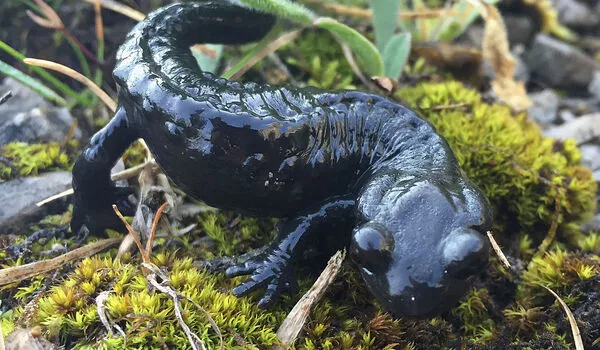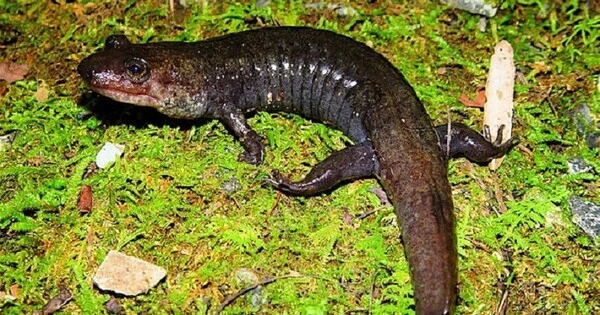A team of scientists has discovered three new species of black-bellied salamander. According to the findings, the new salamanders evolved from black-bellied populations that were previously thought to be a single species and are now found in the eastern United States’ southern Appalachian Mountains.
A research team led by R. Alexander Pyron, the Robert F. Griggs Associate Professor of Biology at George Washington University, discovered three new species of black-bellied salamander. The new salamanders, which live in the eastern United States’ southern Appalachian Mountains, are descended from black-bellied populations that were previously thought to be a single species.
The discovery sheds light on “cryptic” species, which are described as those lacking obvious differences separating evolutionarily distinct populations. According to the researchers, black-bellied salamanders were known as a single species for more than 100 years, but nonetheless have subtle differences between them.
Black-bellied salamanders have been commonly studied for over 100 years. In 2002, a cryptic dwarf species was discovered, and, in 2005, DNA evidence began to suggest there were still more. It wasn’t until our NSF-funded research in 2020 that we were able to sequence genome-scale data to figure out there were actually five similar-looking species.
R. Alexander Pyron
“Black-bellied salamanders have been commonly studied for over 100 years,” Pyron said. “In 2002, a cryptic dwarf species was discovered, and, in 2005, DNA evidence began to suggest there were still more. It wasn’t until our NSF-funded research in 2020 that we were able to sequence genome-scale data to figure out there were actually five similar-looking species.”
The researchers began by observing Desmognathus quadramaculatus, a salamander species that has been poorly studied in the past. They noticed that the specimens differed in morphological, genetic, and geographic aspects, such as size, shape, and color pattern. After sequencing the genome of D. quadramaculatus, the researchers discovered five distinct species, three of which were previously unknown. D. gvnigeusgwotli, D. kanawha, and D. mavrokoilius are the new species names.

The researchers say the black-bellied salamander was known as a single species for more than 100 years. These three new species have genetic differences that set them apart from Desmognathus quadramaculatus, but are cryptic in they lack differences that separate “evolutionarily distinct populations.”
Pyron and his colleagues discovered that Desmognathus quadramaculatus had distinct morphological, genetic, and geographic characteristics, including variations in size, shape, and color pattern.
The researchers performed genome sequencing and discovered five distinct species within what was previously thought to be a single Desmognathus quadramaculatus species. According to the researchers, three of the five are completely new to science: D. gvnigeusgwotli, D. kanawha, and D. mavrokoilius.
“We see obvious and substantial phenotypic variation between most lineages after looking at multiple specimens,” Pyron said. “In fact, the name ‘quadramaculatus,’ which has been in use for over 120 years, is incorrect for all five species. We found the original specimens in museums in Philadelphia and Paris and discovered that they belonged to a completely different species. This begs the question of how cryptic they are in the end.”
Future research should provide significant additional insights into the evolutionary history, geographic distribution, ecological interactions, and other aspects of the new black-bellied salamanders, according to the researchers.





